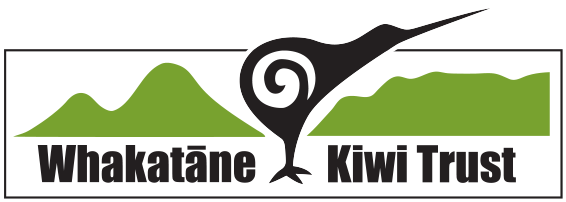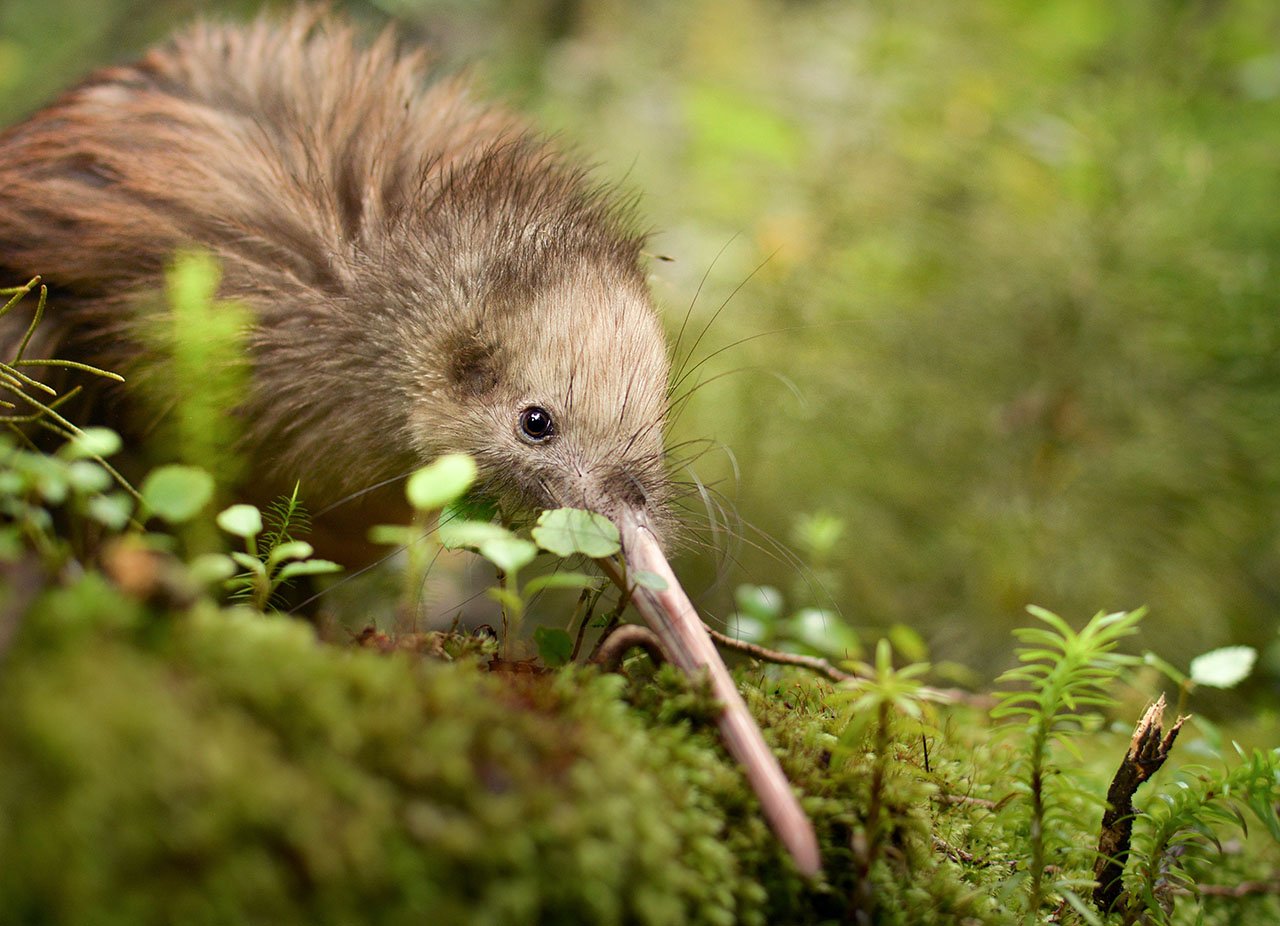
About Preserving Our Kiwi Heritage: Whakatāne Kiwi Trust's Commitment to Conservation
The Whakatāne Kiwi Trust was set up in 2006 as a charitable trust to promote and protect kiwi in the Whakatāne area.
Whakatāne Kiwi Trust is one of the partners in the Whakatāne Kiwi Project, alongside the Department of Conservation, the Bay of Plenty Regional Council, the Whakatāne District Council and Te Rūnanga o Ngāti Awa.
We aim to promote the protection of kiwi and other indigenous species in the Whakatāne area, through advocacy, education and fundraising.
Our mission statement:
Healthy Kiwi, Healthy Forest, Healthy Community
Our vision is to see:
Kiwi thrive and prosper in the Whakatāne district through public support and landowner co-operation.
The Trust manages the delivery of the pest control programme and Trust volunteers are actively involved in predator trapping, kiwi monitoring, education, public events and fundraising.
The objectives of the Trust are:
Implementation of the Whakatāne Kiwi Management Plan, and the Whakatāne-Ōhope Sites Environmental Programme.
Facilitation of community education and advocacy for kiwi conservation.
Encouraging and assisting land-owners and land-managers in the long term protection and survival of kiwi.
Encouraging and promoting volunteer involvement in the conservation of kiwi and other indigenous species.
Encouraging and facilitating relevant scientific research.
Advocating for environmental protection and biodiversity management.
Whakatāne Kiwi Story:
In 1999, eight North Island brown kiwi were found unexpectedly in the Ōhope Scenic Reserve. These adult birds were the last of their local population; because without pest control 95% of their chicks were being killed in their first few months of life. Without intervention, this kiwi population, unique to the Whakatāne area, would have be lost forever.
The discovery of these kiwi prompted the development of the Whakatāne Kiwi Project, a partnership between the Bay of Plenty Regional Council (then Environment Bay of Plenty) and the Department of Conservation, in conjunction with Te Runanga o Ngāti Awa. Since then, the Whakatāne Kiwi Trust and the Whakatāne District Council have also become partners in the project.
The Whakatāne Kiwi Project is dedicated to the serious effort required to re-establish a thriving kiwi population. And that dedication has seen kiwi in the Whakatāne area go from the original eight birds to now over 300. Whakatāne kiwi can now be found in all three major reserves around town (Ohope Scenic Reserve, Mokorua Scenic Reserve, and Kohi Point Scenic Reserve) and have also been established on pest-free Moutohorā (Whale Island) just offshore from town. ‘Kiwi Wandering’ road signs caution drivers to lookout for kiwi crossing the roads, neighbourhoods now have kiwi probing around in their backyards, and the Whakatāne kiwi are well and truly re-established as a thriving population.
Project timeline
Kiwi Management
Monitoring
The Whakatāne Kiwi Project monitor approximately 40 North Island Brown kiwi in the Whakatāne area. These birds are monitored using a small radio transmitter attached to the upper leg of the kiwi. The signal from the radio transmitter can travel a great distance, birds on Moutohorā can sometimes be tracked from the mainland if they are on the southern side of the island.
A dedicated team of Whakatāne Kiwi Trust volunteers, known as the ‘Chick Pingers’, regularly monitor these birds. They check that the birds are where they should be and what they are up to. The radio transmitters on the adult birds can tell us whether the bird is incubating or not, what time it started moving the previous evening and how long it foraged for overnight.
Surveys
The Whakatāne Kiwi Project carry out annual kiwi surveys, rotating them around the three main reserves, Ōhope, Kohi and Mokorua. Whilst the surveys do not tell us an exact number of kiwi in the area, we can use the surveys as an index to how well the kiwi are doing. Each survey consists of a number of listening sites in a reserve and is carried out over a period of four nights. A volunteer records all the calls during a two hour period at each site, the data is collated and an average ‘calls per hour’ is calculated for the survey. An increase in this number provides an indication that the kiwi population is increasing in the area.
Surveys are carried out during the non-breeding season, usually April to June, as kiwi are most active at this time, calling not only to communicate with their partner, but also to ward off other kiwi from entering their territory.
Moutohorā
Moutohorā is a pest-free island sanctuary, nine kilometres off-shore from Whakatāne. A population of North Island Brown Kiwi were established on the island as a backup population to the mainland kiwi in case of a catastrophic event.
It is also used as backup area for our kiwi chicks if we have predator issues in our mainland reserves. Chicks that originate from the mainland return to the mainland once they over 1000g. Chicks that hatch on Moutohorā, stay on the island to sustain its own population.
Forestry
The Whakatāne Kiwi Trust have an ongoing partnership with local forestry companies, such as PF Olsen Ltd, and provide kiwi management services when required. Trust volunteers undertake briefings to harvesting crews, kiwi survey services, to determine kiwi presence, and monitoring kiwi throughout forest harvesting activity. The Trust has found that working with the crews has been very rewarding and the companies strive to ensure the safety of our kiwi icon. Even leaving small patches of trees within a territory or moving entire skid sites, as not to disturb a nesting kiwi.
After harvesting, we sometimes continue to monitor these kiwi and are currently monitoring four adult male kiwi in forestry blocks in the Whakatāne area.
Health Checks
All of our monitored kiwi are regularly checked to ensure they are healthy and to have a new transmitter attached if necessary. The Kiwi Management Team carry out these health checks with the assistance of volunteers. The checks are generally performed monthly for chicks and annually for adult birds.
At a health check, the bird will be weighed, its condition, eyes and ears checked, bill length measured and its general behaviour recorded. Even if a new transmitter is not being attached, the current transmitter is always moved to the other leg to prevent excessive wear on one leg. The transmitter is attached to the leg of the kiwi using a combination of a hospital baby band and tape.
In-Situ Management
After ten years of using Operation Nest Egg (ONE) as a management tool, the Whakatāne Kiwi Project made the decision to switch to ‘in-situ’ chick management, in 2010. This meant rather than taking eggs to an ONE facility, Kiwi Encounter in Rotorua, the kiwi management team would allow the eggs to be hatched ‘in the wild’. Chicks hatched in areas without predator control are moved to our ‘core’ areas, such the Ōhope Scenic Reserve, where there is intensive predator control. However, those that hatched within the core areas would be left and monitored, at site.
This of course means that the chicks are susceptible to predation by stoats, however we are consistently achieving a success rate above the 20% required to increase the kiwi population. This success is also reflected in the kiwi surveys which indicate a kiwi population increase in all our ‘core’ areas.





